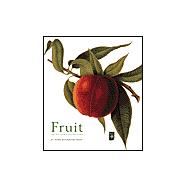
Peter Blackburne-Maze is a leading expert in the history and cultivation of fruit. He is the author of many books and regularly contributes to Garden News, The Kitchen Garden, and The Garden (the Royal Horticultural Society's journal).
| Preface | |
| Introduction | |
| Pome- Apple- Pear- Qunice- Medlar | |
| Stone- Plum- Cherry- Peach- Nectarine- Apricot- Mulberry | |
| Berry- Currant- Gooseberry- Blueberry- Bilberry- Blackberry- Dewberry- Strawberry- Raspberry- Myrtle Berry- Elderberry- Cranberry | |
| Exotic- Fig- Citrus- Melon- Pineapple- Grape- Banana- Mango- Feijoa- Breadfruit- Durian- Custard Apple- Starfruit- Tamarind- Kiwano- Pitaya- Persimmon- Papaya- Sapodilla- Guava- Passionfruit- Pomegranate- Date- Mangosteen- Langstat- Loquat- Rambutan- Longan- Lychee- Chinese Lantern- Cape Gooseberry- Olive- Avocado- Coconut- Pistachio- Cashew- Walnut- Almond | |
| Biographies | |
| Illustrations | |
| Index | |
| Acknowledgements | |
| Table of Contents provided by Publisher. All Rights Reserved. |
The New copy of this book will include any supplemental materials advertised. Please check the title of the book to determine if it should include any access cards, study guides, lab manuals, CDs, etc.
The Used, Rental and eBook copies of this book are not guaranteed to include any supplemental materials. Typically, only the book itself is included. This is true even if the title states it includes any access cards, study guides, lab manuals, CDs, etc.